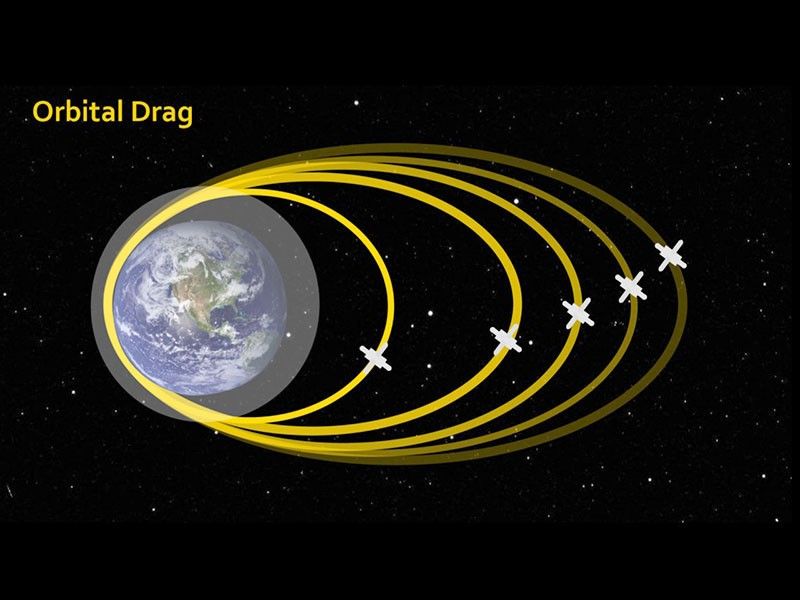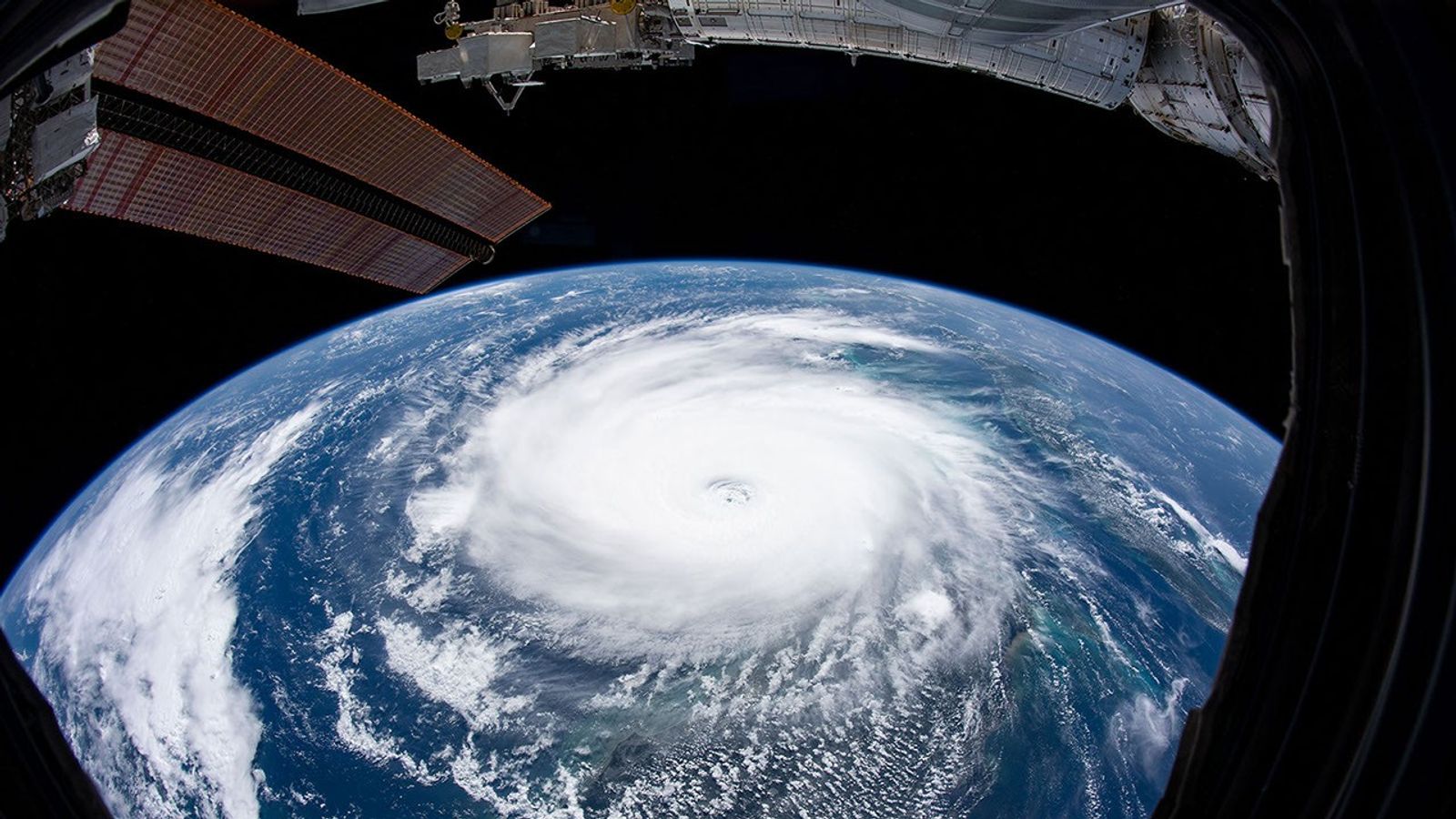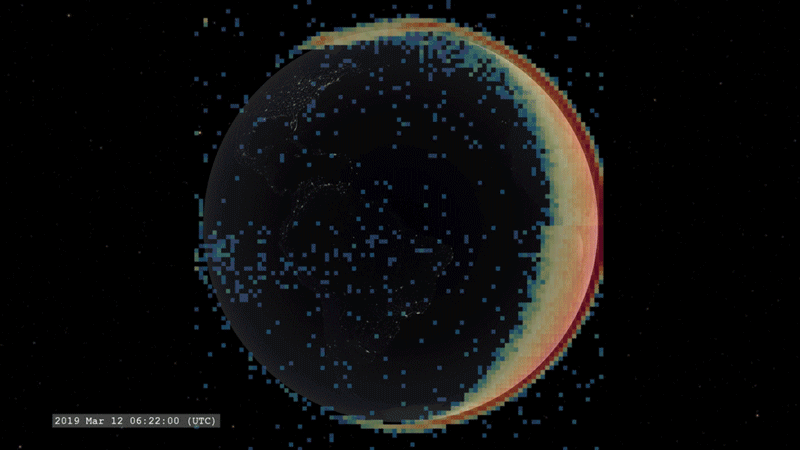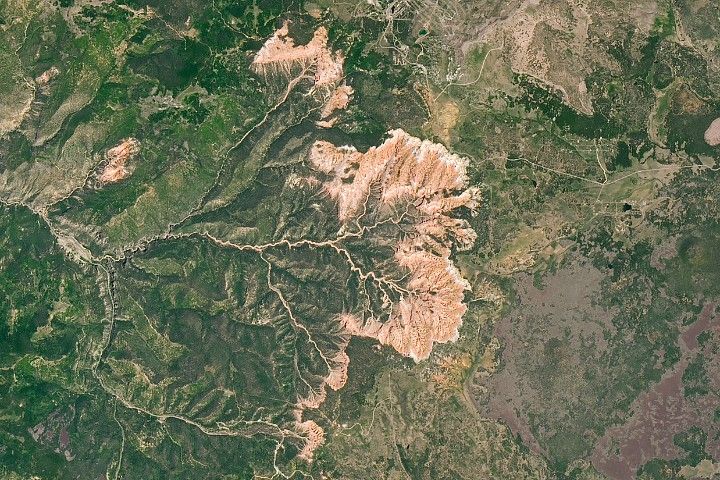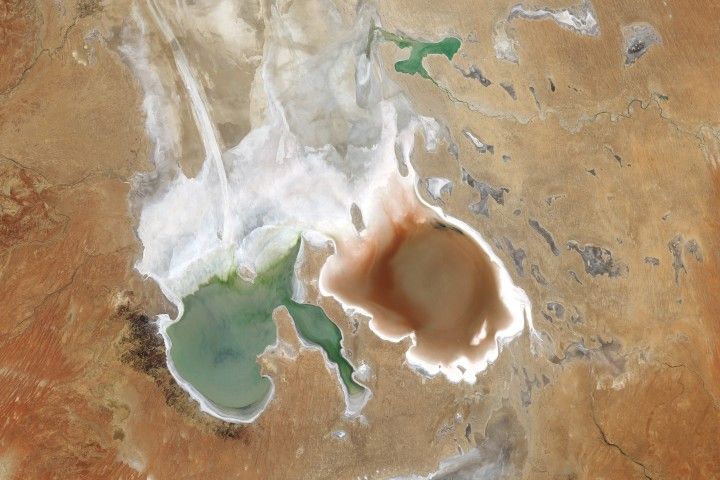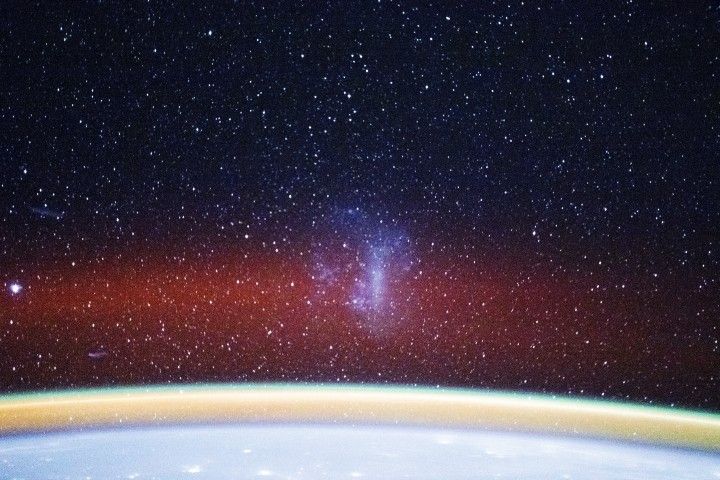1. It’s home to all the charged particles in Earth's atmosphere
Earth’s ionosphere overlaps the top of the atmosphere and the very beginning of space. The Sun cooks gases there until they lose an electron or two, which creates a sea of electrically charged particles.
2. The ionosphere is where Earth’s atmosphere meets space
The ionosphere stretches roughly 50 to 400 miles above Earth's surface, right at the edge of space. Along with the neutral upper atmosphere, the ionosphere forms the boundary between Earth's lower atmosphere — where we live and breathe — and the vacuum of space.
3. It changes – sometimes unpredictably
The ionosphere is constantly changing. Because it's formed when particles are ionized by the Sun’s energy, the ionosphere changes from Earth’s day side to night side. When night falls, the ionosphere thins out as previously ionized particles relax and recombine back into neutral particles. But there are also more unpredictable changes, caused by factors both from Earth below and space above, that make it hard to know exactly what the ionosphere will be like at a given time.
4. It's home to many of our satellites
This boundary to space is right where many of our Earth-orbiting satellites hang out, including the International Space Station. That means these satellites can be affected by the constantly changing conditions in the ionosphere – including sudden swells of charged particles that increase drag on satellites and shorten their orbital lifetimes, or how long they can continue orbiting Earth.
5. Disturbances there can disrupt signals
The ionosphere also plays a role in our everyday communications and navigation systems. Radio and GPS signals travel through this layer of the atmosphere, or rely on bouncing off the ionosphere to reach their destinations. In both cases, changes in the ionosphere's density and composition can disrupt these signals.
6. It's influenced by weather
Weather from Earth, like hurricanes or large thunderstorm systems, can create pressure waves that ripple up into the ionosphere. This is one of the factors that can cause changes in the ionosphere.
These effects were only discovered when data from NASA satellites revealed connections between weather conditions and changes in Earth's ionosphere.
7. …And it’s influenced by space weather too
Because the ionosphere is made up of charged particles, it's uniquely reactive to the changing magnetic and electric conditions in space. These conditions – along with other events like bursts of charged particles – are called space weather and usually connected to solar activity. Along with regular weather from here on Earth, space weather is the other major factor that impacts the ionosphere.
8. The ionosphere constantly glows
Airglow is what we call the bright swaths of light that shine from Earth's upper atmosphere. It happens when atoms and molecules in the upper atmosphere, excited by sunlight, emit light to shed their excess energy. Or, it can happen when atoms and molecules that have been ionized by sunlight collide with and capture a free electron. In both cases, they eject a particle of light – called a photon – in order to relax again.
Airglow isn't just a beautiful sight: It's a useful marker for what happens in the ionosphere. Each atmospheric gas has its own favored airglow color depending on the gas, altitude region, and excitation process, so we can use airglow to study where these gases are and how they behave.
9. We study the ionosphere with invisible types of light
In January 2018, NASA sent GOLD – short for Global-scale Observations of the Limb and Disk – to space aboard a commercial communications satellite. From its steady vantage point 22,000 miles over the Western Hemisphere, GOLD creates full-disk images of Earth in far-ultraviolet light, a type of light that's invisible to our eyes, but reveals day-to-day changes in the upper atmosphere.
10. More images from the ionosphere
On Oct. 10, 2019, NASA launched ICON – the Ionospheric Connection Explorer – to join GOLD in studying the ionosphere. The spacecraft is now in low-Earth orbit, 360 miles above Earth. ICON studies the ionosphere using a combination of airglow, invisible wavelengths of light, and direct measurements of its surrounding particles. And the mission just sent back its first science images! Together, GOLD and ICON are helping us learn a lot more about the ionosphere, this part of space that is closest to home.






























